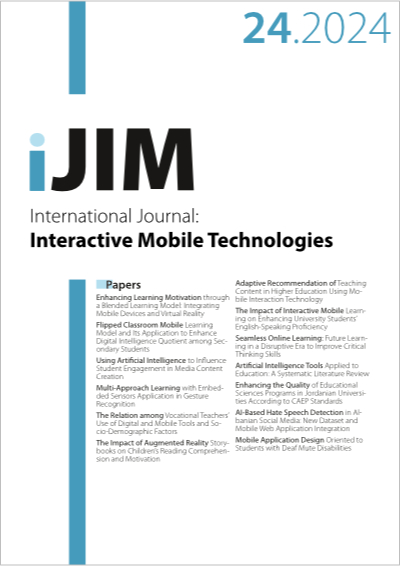Mobile Application Design Oriented to Students with Deaf Mute Disabilities
DOI:
https://doi.org/10.3991/ijim.v18i24.48655Keywords:
Deaf mute, design sprint, disabilities, inclusive educationAbstract
Deaf-mute individuals have a right to inclusive education in today’s global context. The primary objective of this study is to design a mobile application that caters to the specific needs of students with hearing and speech disabilities, contributing to the promotion of inclusive and equitable education. To conduct this study coherently, the effective Design Sprint methodology was employed, consisting of five well-defined phases. Throughout this process, interviews and surveys were conducted with various stakeholders, including students, parents, and specialists in inclusive education. The results of these investigations formed a robust foundation for understanding user needs and perspectives, ensuring the optimal adaptation of the mobile application to the demands of this demographic. In conclusion, this study underscores the importance of creating inclusive solutions for students with hearing and speech disabilities, emphasizing the need for collaboration and commitment from educational authorities to successfully implement such solutions.
Downloads
Published
How to Cite
Issue
Section
License
Copyright (c) 2024 Elizabeth Liñan-Espinoza, Laberiano Andrade-Arenas

This work is licensed under a Creative Commons Attribution 4.0 International License.



